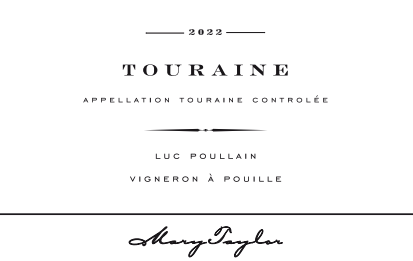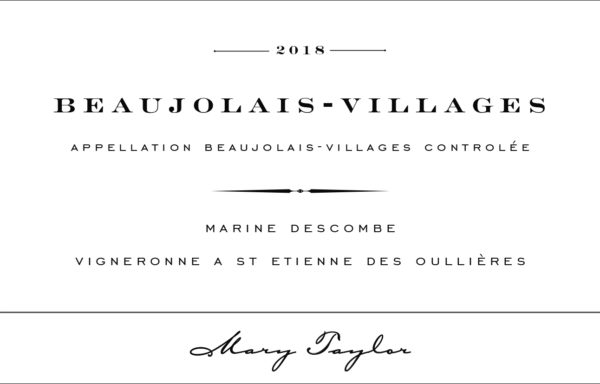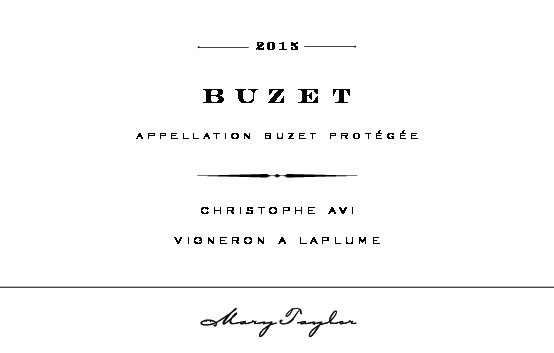
Gaillac is the 2nd oldest-known vineyard area in France. Nathalie Larroque and her family live at the farm known as Mas d’Oustry built in 1498. This blanc Perlé is made from 80% Mauzac and 20% Muscadelle – 2 grapes typical to the Southwest of France. The word “Perlé” indicates a slight bite – tiny bubbles in the wine. Drink as an aperitif – beautiful before dinner to open your senses.
Wine Description
Reviews and Scores:
89 Points – (2022 vintage review) – Wine Enthusiast, “Best of the Year” December Issue 2024
Vintage Notes:
2020: This vintage was an easy one thanks to good weather conditions. A dry summer (from June 1st to September 5th), followed by a clean and healthy Mauzac and Muscadelle harvest of excellent quality. A fruit-forward and quality vintage.
Gaillac Perlé:
Nathalie Larroque rescues old varietals like Prunel’Art, Fer Servadou (also known as Braucol), Duras, Mauzac and Len de l’El. The family, including her husband Remi, run a farm called Mas d’Oustry – with familial lineage back about 16 generations. The estate makes just 90,000 bottles (10,000 bottles of Gaillac Perlé).
Sustainably farmed HVE Level 3-certified. Vines are pruned in the simple guyot method with grass growing in every other row. They lay an organic fertilizer in early autumn. Half the soil is sodded, between the rows to avoid erosion problems and to provide a greater rural expression. Vine management: de-budding, leaf thinning.
Pheromone trapping of adults beetles (Eudemis) is used primarily during endemic or low periods in an insect’s population cycle.
The soil is clay and limestone and most of our vines face south-southeast in the case of the reds and north-northeast for the whites. Density is 5000 vine-plant/HA.
Skin maceration 12 hours at 10°C, slow fermentation at 18°. At the end, the wine is chilled below 10° to keep its carbon dioxide. That is how it becomes “perlé.”
The blend is made at the end of fermentation. The bottling is done at the autumn period until the end of March. Very little sulphur is used.
Aged on lees for 2 months then racked.
A rich honeyed wine with a tickle. Pairs gloriously with rich and spicy food or as an aperitif.
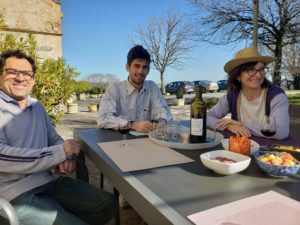
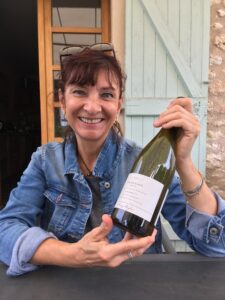
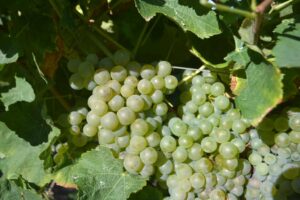
Gaillac:
Gaillac is a historied wine region in southwest France with an ebb and flow of popularity
and inhabitants since the second century. From early cultivation, to being raided and
conquered, then luxury producer to royalty, prohibitive tax levies, centuries of being
overlooked, and now resurgence.
The Gauls first cultivated Gaillac and created a river port to export their wines to the
Roman providence of Gallia Narbonesis, which is now what we know as Languedoc and
Provence. The Romans propelled Gaillac wine into prosperity after conquering Aquitaine
with their expansive trade routes.
After the collapse of the Roman Empire, Gaillac wine fell into obscurity – not for the only
time – until monasteries sprang up across the Southwest, and monks stabilized the region
and began producing and selling wine. At the end of the first century, Gaillac wines gained
popularity and the attention of royalty in France and England, shipped along the Tarn and
Gironde on boats called ‘gabare.’
That is until heavy tax levies were imposed on Gaillac wines by ports in Bordeaux. The
Gaillac exported wine became prohibitively expensive in comparison to the wines from
their northern neighbors, and again the region’s local luxury began to be forgotten.
Now, Gaillac wines are making a comeback as smaller producers are extending their export
network to share their millennium-long traditions so that their Duras, Mauzac, Muscadelle,
and method ancestral Sparkling wines are not longer just local luxuries, but celebrated and
shared.
Fun fact: Pigeonniers, or pigeon houses, have spanned southwestern French winemaking
regions since Romans introduced the structures and benefits of keeping pigeons or doves
for their agriculturally significant by-product: fertilizer. Counts of Toulous, and later, the
King of France, ruled that pigeon fertilizer shoule be used Gaillac’s vineyards, since it leaves
no scent or added acidity to the soil. Pigeon keeping was seen as a privilege to be restricted
to royalty, clergy, and nobility. The pigeonnier’s size, architecture, and ornateness denoted
its owner’s complex hierarchy of authority. Thus, few survived the French Revolution.
However, in line with France’s new structure of democracy, pigeon keeping was opened to
commoners legally and symbolizes and end to feudal hierarchies. To this day, viticulturists
and farmers prefer dove-droppings as the most effective technique to fertilize the land.
